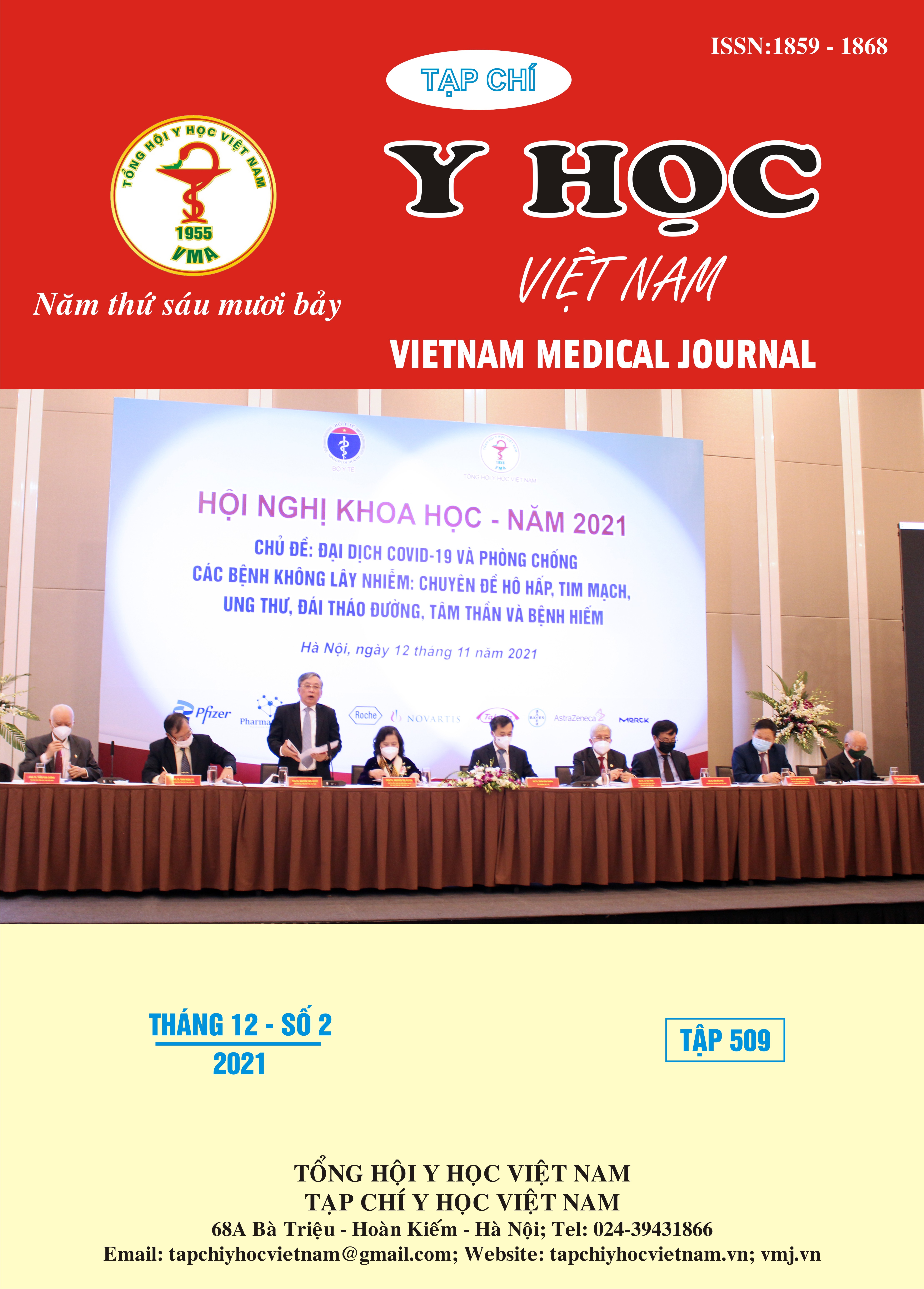SITUATION OF DELIRIUM SYNDROME AMONG PATIENTS AGED 60 YEARS AND OLDER IN EMERGENCY DEPARTMENT IN NATIONAL GERIATRIC HOSPITAL
Main Article Content
Abstract
Our study aimed to describe the situation of delirium syndrome among patients aged 60 years and older in Emergency Department in National Geriatric Hospital. This is a cross-sectional descriptive study, including 106 patients aged 60 years and older who came for examination and treatment in Emergency Department in National Geriatric Hospital, were diagnosed with delirium syndrome according to diagnostic criteria of ICD 10. Results: Most of patients had delirium symptoms were in the age group of 80 – 89 years old, the mean age was 78.3 ± 10.9. There was a small gender difference, men were more common than women (52.8% and 47.2%). Most elderly people lived with their families (68.9%). There were 2 cases livedg in the nursing home (1.9%). Most of the patients had visual impairment (87.7%) and hearing loss (81.1%). The most common symptoms were spatial orientation disorder and memory loss, with the same rate of 89.6%, followed by the decrease in attention span (61.3%). The least common was sleep-wake cycle reversal (24.5%).
Article Details
Keywords
delirium syndrome, elderly people
References
2. Wass S, Webster PJ, Nair BR. Delirium in the Elderly: A Review. Oman Med J. 2008;23(3):150-157.
3. Fong TG, Tulebaev SR, Inouye SK. Delirium in elderly adults: diagnosis, prevention and treatment. Nat Rev Neurol. 2009;5(4):210-220. doi:10.1038/nrneurol.2009.24
4. Carpenter CR, Bassett ER, Fischer GM, Shirshekan J, Galvin JE, Morris JC. Four sensitive screening tools to detect cognitive dysfunction in geriatric emergency department patients: brief Alzheimer’s Screen, Short Blessed Test, Ottawa 3DY, and the caregiver-completed AD8. Acad Emerg Med Off J Soc Acad Emerg Med. 2011;18(4):374-384. doi:10.1111/j.1553-2712.2011.01040.x
5. Han JH, Vasilevskis EE, Chandrasekhar R, et al. Delirium in the Emergency Department and Its Extension into Hospitalization (DELINEATE) Study: Effect on 6-month Function and Cognition. J Am Geriatr Soc. 2017;65(6):1333-1338. doi:10.1111/jgs.14824
6. Pisani MA, Murphy TE, Van Ness PH, Araujo KLB, Inouye SK. Characteristics associated with delirium in older patients in a medical intensive care unit. Arch Intern Med. 2007;167(15):1629-1634. doi:10.1001/archinte.167.15.1629
7. Trzepacz PT, Franco JG, Meagher DJ, et al. Delirium Phenotype by Age and Sex in a Pooled Data Set of Adult Patients. J Neuropsychiatry Clin Neurosci. 2018;30(4):294-301. doi:10.1176/appi.neuropsych.18020024
8. Martins S, Fernandes L. Delirium in elderly people: a review. Front Neurol. 2012;3:101. doi:10.3389/fneur.2012.00101


